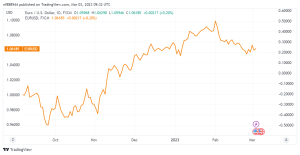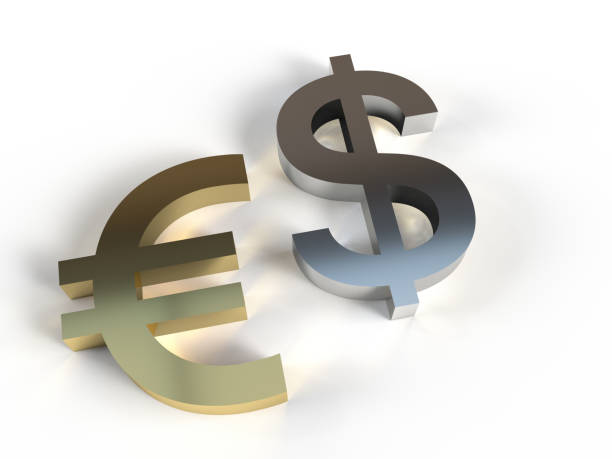After Wednesday’s rally, the EURUSD fell and reversed virtually all of the previous day’s gains on Thursday. The pair managed to launch a comeback early Friday, rising over 1.0600. The Euro’s recent movement indicates investors’ indecision as attention switches to the February US ISM Services PMI report and remarks from central bank officials.
For the time being, hawkish ECB wagers help the Euro keep its footing.
Although the Euro struggled to gain strength in the first reaction to Eurozone inflation numbers that were higher than expected, hawkish European Central Bank (ECB) demands have become louder and supported the currency.
If core inflation in the eurozone continues consistently high, ECB Governing Council member Pierre Wunsch indicated early Friday that a terminal rate of 4% could not be ruled out. In the meanwhile, Morgan Stanley stated in its most recent research note. following “significant changes” to inflation predictions, the ECB has raised its terminal rate projection to 4%. Similarly, Danske Bank analysts revealed that they now expect the ECB to raise the policy rate to 4% in July, up from 3.25% before. Later in the session, European Central Bank (ECB) Vice President Luis de Guindos will discuss the ECB’s policy outlook.
The previous time de Guindos spoke, he stated that rate hikes after March would be dependent on data. If he opens the door to another 50 basis point (bps) rate rise, or raises, after March due to rising inflation, the Euro is likely to maintain its position versus its rivals.
Investors are looking forward to the US ISM Services PMI data.
The ISM Services PMI report will be featured on the US economic docket on. If the headline PMI falls below 50, recession concerns might reappear, and the US Dollar could fall ahead of the weekend. If the headline remains comfortably over 50, as expected by the market, the Prices Paid Index may cause a market reaction. The inflation component of the survey is expected to fall to 64.5 in February from 67.8 in January. If that component falls more than expected, the USD will suffer, and vice versa.
Nevertheless, throughout the American session, market players will pay particular attention to risk sentiment. Earlier in the week, positive Chinese Manufacturing PMI data allowed risk flows to return to markets, making it harder for the USD to gain strength. Caixin Services participated in the Asian session. The Chinese PMI came in above forecasts, indicating that business activity in the service sector continued to increase at a rapid rate in February.
US stock index futures are up between 0.5% and 0.8% during European trade hours. If Wall Street’s major indices advance following the opening bell, the EURUSD might extend its gains.
EURUSD Technical Analysis
EURUSD is now trading just above the early February falling regression channel. The 20-period and 50-period Simple Moving Averages (SMA) support the resistance region at 1.0610/1.0620.

After the pair clears that barrier, it may aim for 1.0650/60 (Fibonacci 23.6% retracement of the previous downturn, 100-period SMA), 1.0700 (psychological threshold), and 1.0720 (Fibonacci 38.2% retracement).
If the pair returns to the descending channel, sellers may take action, causing EURUSD to fall towards 1.0560 (the descending channel’s midpoint), 1.0540 (the static level), and 1.0500. (Psychological level, lower limit of the descending channel).









